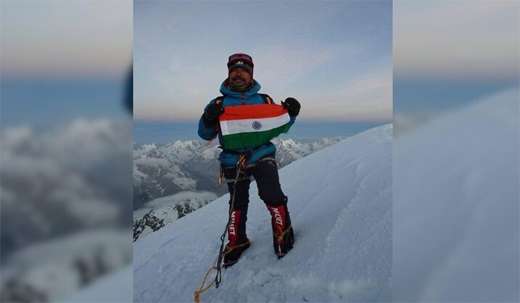Introduction:
In a tragic incident that underscores the deadly challenges of high-altitude mountaineering, an Indian climber has died on Mount Everest after reportedly refusing to descend despite warnings of extreme exhaustion. The climber, identified as 41-year-old Narayanan Iyer from Maharashtra, perished during his summit attempt, making him one of several casualties on the world’s highest peak this season.
Body:
According to Nepalese authorities and expedition organizers, Iyer reached the summit of Mount Everest (8,848.86 meters) earlier this week but began showing signs of severe fatigue during the descent. Sherpa guides accompanying him urged a retreat, but Iyer allegedly refused, insisting on continuing the descent at his own pace.
Despite multiple efforts to assist him, the climber collapsed near the Hillary Step, a notorious bottleneck just below the summit, where many fatalities have occurred over the years. Rescue attempts were hampered by the extreme altitude and rapidly deteriorating weather conditions. His body remains on the mountain, as recovery operations above 8,000 meters—known as the “Death Zone”—are perilously difficult and often deemed too risky.
The incident highlights ongoing concerns over the safety and preparedness of climbers attempting Everest. This spring season has seen a surge in summit attempts, with over 400 permits issued by Nepal’s Department of Tourism. The resulting congestion has raised alarms among veteran mountaineers about overcrowding, inexperience, and commercial pressures overriding safety protocols.
This year’s climbing season has already recorded multiple deaths from high-altitude sickness, frostbite, and exhaustion. The Indian Embassy in Kathmandu has confirmed Iyer’s death and is in coordination with local authorities and the expedition agency to provide support to his family.
Iyer, a seasoned trekker but relatively new to high-altitude peaks, had reportedly undergone limited acclimatization. Experts note that the physical and psychological toll of Everest cannot be underestimated, especially when climbers push themselves beyond safe limits.
“Refusing to descend when advised is a dangerous decision in the Death Zone,” said Ang Tshering Sherpa, former president of the Nepal Mountaineering Association. “Above 8,000 meters, even a minor error in judgment can be fatal. Climbers must respect the mountain and listen to their guides.”
Conclusion:
The death of Narayanan Iyer serves as a somber reminder of the unforgiving nature of Mount Everest and the perils faced by climbers each season. As interest in high-altitude expeditions continues to grow, experts call for stricter regulations, better training, and an emphasis on safety over summits. With the 2025 Everest season in full swing, authorities are urging climbers to heed professional advice and prioritize survival over ambition.



